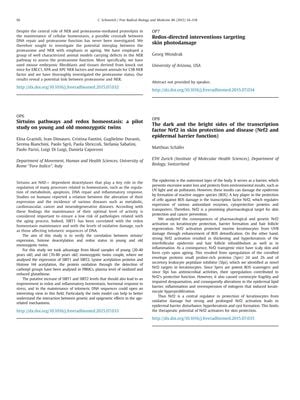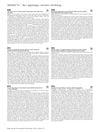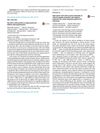The Dark and the Bright Sides of the Transcription Factor Nrf2 in Skin Protection and Disease
August 2015
in “
Free Radical Biology and Medicine
”
Nrf2 keratinocytes antioxidant enzymes cytoprotective proteins reactive oxygen species ROS UV light UVB damage cornified envelope proteins secretory leukocyte peptidase inhibitor corneocyte fragility desquamation epidermal lipid barrier keratinocyte hyperproliferation epidermal barrier function hyperkeratosis inflammation cyst formation

TLDR Nrf2 helps protect skin from damage but too much can cause skin problems.
The document discusses the role of the transcription factor Nrf2 in skin protection and disease, particularly focusing on its effects on keratinocytes, the primary cells in the epidermis. Nrf2 regulates the expression of antioxidant enzymes, cytoprotective proteins, and transporters, making it a significant factor in protecting cells from reactive oxygen species (ROS) damage caused by environmental factors like UV light. The study found that activation of Nrf2 in murine keratinocytes provided protection from UVB damage by enhancing ROS detoxification. However, strong and prolonged activation of Nrf2 led to negative effects, such as thickening and hyperkeratosis of the epidermis, inflammation, and cyst formation in aging mice. This was due to the upregulation of cornified envelope proteins and secretory leukocyte peptidase inhibitor, which, while contributing to ROS scavenging and antimicrobial activities, also caused corneocyte fragility and impaired desquamation. These changes resulted in a disturbed epidermal lipid barrier and keratinocyte hyperproliferation. Therefore, while Nrf2 is crucial for protecting keratinocytes from oxidative damage, its strong activation can disrupt the epidermal barrier and lead to skin disease, which limits the therapeutic potential of Nrf2 activators for skin protection.

